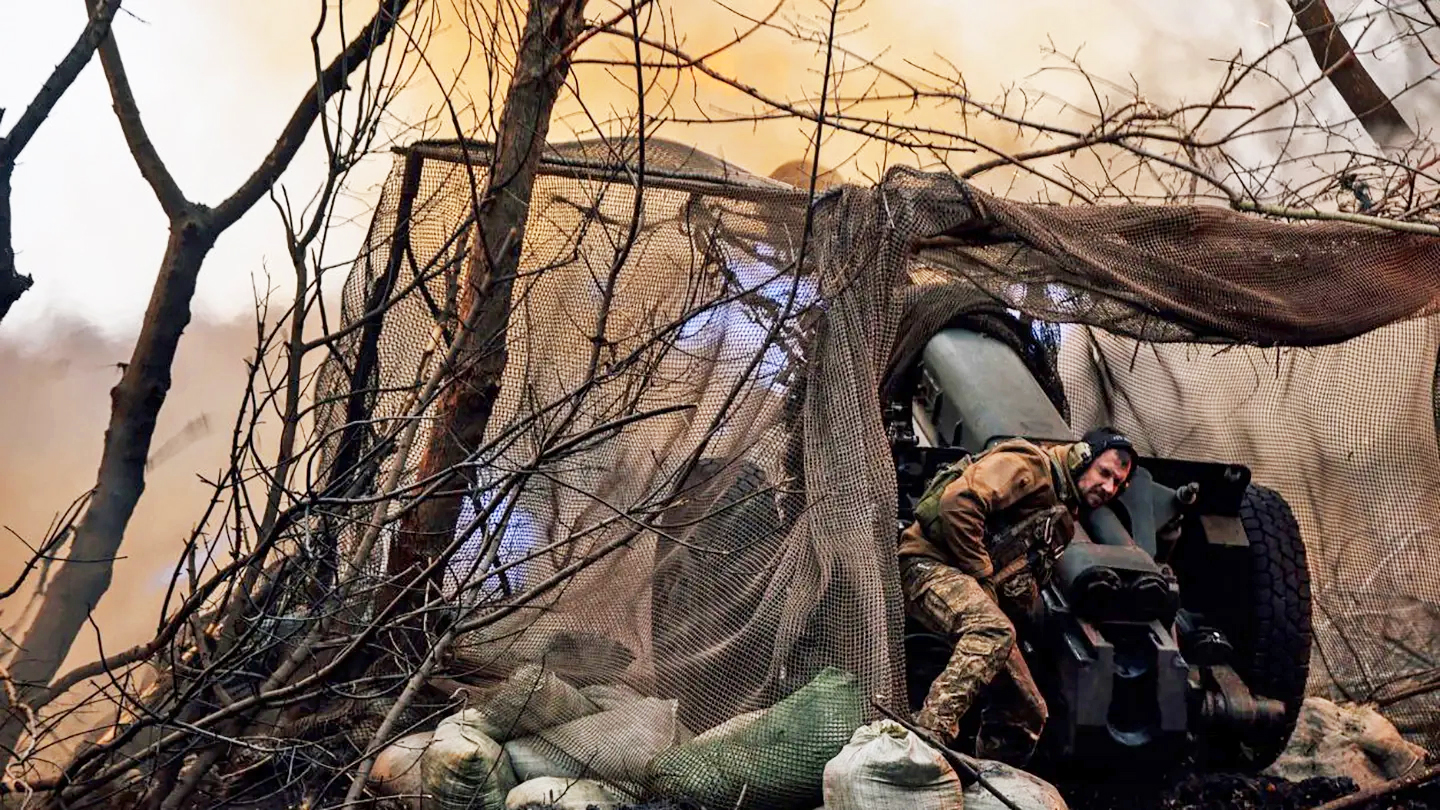Ukraine has staged a new offensive in Kursk, according to the Russian Defense Ministry (MoD) and mibloggers. However, its scale and objective remain unclear at the moment and Ukrainian officials have yet to comment. Ukraine first invaded this Russian region six months ago to the day.
Most accounts say that Ukrainian forces are attacking southeast of Sudzha, their main stronghold in the salient. There are differing assessments of the success of that advance.
Thursday evening local time, the Russian MoD claimed the advance was halted.
“Units of the North group of forces thwarted an attempt by the Ukrainian Armed Forces to conduct counteroffensive actions in the direction of the settlements of Cherkasskaya Konopelka and Ulanok in the Kursk region,” the MoD stated on Telegram. “All attacks were repelled.”
The MoD claimed that Ukraine launched eight waves of attacks with “up to two mechanized battalions in infantry fighting vehicles and armored combat vehicles, supported by tanks and obstacle clearing vehicles.”
The Kremlin-connected Rybar Telegram channel offered a different view a few hours earlier.
Ukrainian formations, claimed Rybar, continued attacks in the direction of Ulanok and Russkaya Konopelka. Those villages are about four miles south and five miles east respectively of Sudzha.
“Based on objective control footage, the enemy was able to pass through Cherkasskaya Konopelka, but two armored fighting vehicles were hit by UAV strikes from the 177th separate air defense regiment on the highway north of Fanaseyevka,” Rybar wrote. “Information about the status of Fanaseyevka itself is still not clear, but the loss of Cherkasskaya Konopelka by Russian troops is confirmed. Most of the footage so far appears from the roads right near this settlement.”
That village is about two miles southeast of Sudzha.
Rybar suggested that the appearance in this advance of mine-clearing equipment and tank recovery vehicles pointed to Ukraine trying to make a major push. The Telegram channel noted that video emerged on social media showing such vehicles being destroyed.
One was a U.S.-donated M1150 Assault Breacher Vehicle (ABV). A variant of the M1A1 Abrams, it is one of the world’s most capable combat mine-clearing vehicles.
The other destroyed vehicle was a German-made Bergepanzer 2 armored recovery vehicle used to pull tanks off the battlefield.
“It is precisely the use of scarce equipment, and not the total number of armored fighting vehicles, that speaks of the rather serious plans of the Ukrainian command for these attacks,” Rybar posited.
At the moment, the nature of those plans remains unclear.
The only mention of Kursk in the latest Ukrainian Armed Forces General Staff battlefield assessment is a terse sentence: “Five clashes have occurred in the Kursk direction since the beginning of the day.”
One Russian milblogger posited that the operation could be a “diversionary maneuver” to draw forces from other directions.
“The next few days will be extremely tense in the entire Kursk direction,” well-known milblogger Roman Alekhine wrote on Telegram. “So to those who are helping in this direction, continue to help your units!”
BBC Russia painted a gloomy picture of Ukraine’s prospects for advancing much beyond the 500 square miles of the existing salient, which is about half what it was at its peak.
“This section of the front does not look promising for the Armed Forces of Ukraine – it is an impassable and sparsely populated area, and the main cities of the Kursk region are located in other directions, to the north of Sudzha,” the outlet explained.
One likely goal “is to push the Russian units that have advanced closer to the regional center to the east, and to remove the threat of its assault,” BBC postulated. “In the case of the loss of control of the Armed Forces of Ukraine over Sudzha, the retention of the rest of the territory of the Kursk region loses its meaning.”
Ukraine invaded Kursk on Aug. 6, 2024, and both sides have suffered a large number of casualties and lost equipment. The importance of this region to both sides was highlighted by North Korea’s decision to send some 12,000 troops to the region, about a third of which are said to have been killed or wounded.

While Ukrainian military officials have remained quiet about what’s happening in Kursk today, Ukrainian President Volodymyr Zelensky talked about the importance of holding on to the territory it captured.
“The aggressor and criminal can and should be fought in their own home,” Zelensky said on X earlier Thursday. “The occupier can and should be confronted on their own territory. And this is not only fair, but also effective—for protecting lives in our country and across Europe. The Kursk operation clearly demonstrates the essence of the ‘peace through strength principle.’”
Those comments come at a possible inflection point for Ukraine. Next week, three major meetings of world political and military leaders will take place in Europe. The future of this nearly three-year-old war will be the main focus.
Next Wednesday, U.K. Defense Secretary John Healey will lead a meeting of Kyiv’s allies under the Ukraine Defense Contact Group format, a coalition of some 50 nations brought together to help arm Ukraine. It was the brainchild of former U.S. Defense Secretary Lloyd Austin, but now the U.K. is taking charge, the British Ministry of Defense said on Thursday.
“The meeting is scheduled ahead of a summit of NATO defense ministers in Brussels, but the Ukraine grouping, also known as the Ramstein Format, is far bigger, including more than 50 allies,” Politico noted.
In addition, the Munich Security Conference will take place between Feb. 14 and 16. The announcement that U.S. President Donald Trump’s special envoy for Ukraine and Russia will be attending set off speculation that a peace plan would be unveiled there.
However, Keith Kellogg shot that suggestion down.
“The only guy that can do that in the world, and bring this to a conclusion, is Donald J. Trump,” Kellogg told Newsmax.
The coming days will shed more light on the extent and nature of this latest Ukrainian advance in Kursk. The last such advance, launched last month, fizzled out with little ground gained.
However, despite two large-scale attempts and constant smaller ones by Russia to push them out, Kyiv’s forces in Kursk remain a problem for Russian President Vladimir Putin ahead of any peace talks.
Contact the author: howard@thewarzone.com
